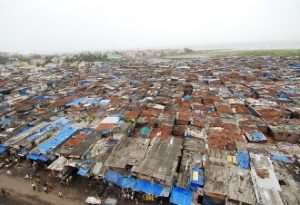
It is true that the residents of this slum may not have seen celebrities such as Yvonne Nelson, John Dumelo, Shatta Wale or Amakye Dede, but they certainly have their own way of living up to the cliché, “all work and no play makes Jack a dull boy.”
The slum
Located in the Odododiodio Constituency in the Greater Accra Region, the slum houses people from various cultural and ethnic backgrounds, with the Konkombas and Dagombas being the two dominant tribes.
The Konkomba Yam Market provides the main source of economic activitys for the residents of the slum.
From dawn to dusk, the old and the young, male and female engage in one economic activity or another, ranging from truck pushing, head porterage, discharging of yams, to connecting buyers and sellers in the market.
The cosmopolitan nature of this slum community which has a population of about 100,000 per the 2010 Population and Housing Census figures, presents a wide range of avenues for social interaction.
Social life
Despite the hurly-burly life in this slum, social interaction and communal spirit remain an integral part of the residents.
After a hard day's work, it is common to find them relieving stress either in the drinking bars or common assembly spots.
The youth, in particular, close their day with the playing of cards, ludo, draughts and other games.
Most of them, who are lovers of football, throng popular bases to watch their favourite teams in the English Premier League, Spanish La Liga and German Bundesliga play.
In fact, this has been the major source of entertainment for the younger generation.
Sundays are special days
Just as the Bible tells us that God rested on the seventh day after creating the world in six days, so do the residents of Old Fadama hold Sundays in high esteem.
The yam market is closed to economic activities on Sundays, while social activities are at their peak.
Any visitor to the slum on Sunday will most likely be greeted with a naming ceremony, a graduation ceremony of an apprentice, the launch of music album of a local artiste, or the performance of a traditional dance.
The most pronounced of these traditional dances is the Kinatsun dance by the Konkombas.
The “Dabida Cultural Group” is visibly present on festive occasions, including political platforms, to perform for a fee, while fulfilling the entertainment needs of the residents.
Local hotels and popular spots in the area such as “Brazil”, “You this girl”, “Konkonsa Bar”, and “Work and happiness” are never deserted as the youth often hang around with their loved ones.
An interesting aspect of the social life of the residents is wrestling, a game meant for the muscular and the fittest.
It is a beautiful spectacle to see nerves and muscles standing out on the thighs, backs, and shoulders of able-bodied men, who display their prowess while the crowd watches and cheers them on.
Conclusion
The social life of the people in this slum is a communal one rooted in the concept of mechanical solidarity or “touch one, touch all” principle.
Just like the proverbial broom, they sweep together in an interwoven cultural pattern.
If you go with me to the slum community one of these days, you will understand.
Source: Starrfmonline
IMAGE PHOTOGRAPHY 9820101260




 2024 election will be decided on the grounds of the economy; choice of running m...
2024 election will be decided on the grounds of the economy; choice of running m...
 Dumsor: We're demanding less; just give us a timetable — Kwesi Pratt to ECG
Dumsor: We're demanding less; just give us a timetable — Kwesi Pratt to ECG
 Do I have to apologise for doing my security work, I won’t – Simon Osei-Mensah r...
Do I have to apologise for doing my security work, I won’t – Simon Osei-Mensah r...
 Prestea and Bogoso mines: Complete payment of outstanding salaries not later tha...
Prestea and Bogoso mines: Complete payment of outstanding salaries not later tha...
 NDC postpones Prof. Opoku-Agyemang entry tour to May
NDC postpones Prof. Opoku-Agyemang entry tour to May
 All my businesses have collapsed under Akufo-Addo — NDC Central regional chair
All my businesses have collapsed under Akufo-Addo — NDC Central regional chair
 Military, Prison Officers clash in Bawku, three injured
Military, Prison Officers clash in Bawku, three injured
 GRA-SML contract: MFWA files RTI request demanding KPMG report
GRA-SML contract: MFWA files RTI request demanding KPMG report
 Court threatens to call second accused to testify if NDC's Ofosu Ampofo fails to...
Court threatens to call second accused to testify if NDC's Ofosu Ampofo fails to...
 Family accuses hospital of medical negligence, extortion in death of 17-year-old...
Family accuses hospital of medical negligence, extortion in death of 17-year-old...
